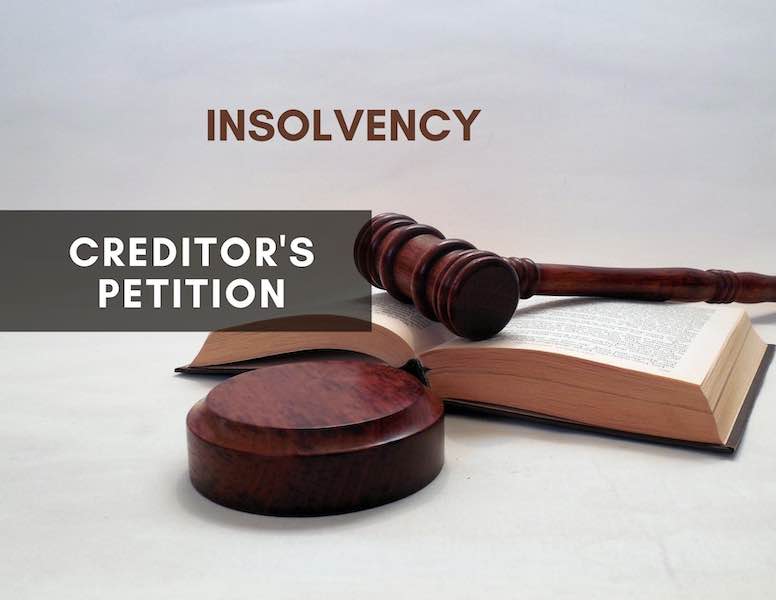The Verifying Affidavit in a Creditor’s Petition (The Disconnect between Personal and Corporate Insolvency)
by Avinash Kamalanathan ~ 27 August 2020


Lavinia Kumaraendran (Partner)
Tel: 603-6201 5678 / Fax: 603-6203 5678
Email: lkk@thomasphilip.com.my
Website: www.thomasphilip.com.my

Avinash Kamalanathan (Associate)
Tel: 603-6201 5678 / Fax: 603-62035678
Email: avi@thomasphilip.com.my
Website:www.thomasphilip.com.my
This topic is one that is close to the heart. It is an argument that the team argued on a purely legal and procedural argument which culminated in the decision of the Court of Appeal in clarifying two vastly conflicting High Court decisions.
Said issue is this; must an affidavit that verifies the creditor’s petition (the “petition”) in personal insolvency proceedings be affirmed after the attestation of the petition.
The answer according to the recent Court of Appeal decision is quite simply, no. The rationale in which formulated the appellate Court’s decision will be discussed in the article herein.
The Governing Provision
As alluded to above, the entire issue raised was a purely legal and procedural point, thus, appreciating the relevant provisions that govern this area is of utmost importance.
Section 6 (1) of the Insolvency Act, 1967 (the “Act”) and Rule 105 of the Insolvency Rules, 2017 (the “Rules”) clearly stipulate that every creditor’s petition must be verified by way of an affidavit that verifies the petition (“verifying affidavit”) which is affirmed by someone who can verify the contents of the same.
The Disconnect with the Winding-Up Rules
A key contention of the appellate Court was the apparent omission in the Act to a specific timeline for a verifying affidavit to be affirmed in relation to the filing or even the attestation of the petition.
Contrast the same with Rule 26 of the Winding-Up Rules, 1972 which expressly states as follows:
“Every petition for the winding-up of a company by the Court shall be verified by an affidavit referring thereto. The affidavit … filed within four days after the petition is presented, and the affidavit shall be prima facie evidence of the statements in the petition.”
This key addition in the Winding-Up Rules simply means that there is no room for argument in terms of whether a verifying affidavit can be affirmed before the filing of the petition. The rationale for the same is simple and apparent, a verifying affidavit can only affirm the contents of a petition that is existing in law. A petition only exists in law the moment it has been filed (or at the very least attested before a party capable of attesting the same).
The Contrasting High Court Decisions
Whilst there are multiple High Court decisions and also a handful of Court of Appeal decisions on this issue, said decisions represent an extension of two fundamental High Court decisions, namely Justice Edgar Jospeh Jr in Sobri bin Arshad v Associated Tractors Sdn Bhd, [1991] 3 MLJ 32 and Justice VC George in Re Mohd Sharif bin Shapie, ex p Malayan Bankin Bhd, 1992 2 MLJ 102.
In both aforementioned cases, the verifying affidavit was affirmed before the petition was filed (or at the very least on the same day) and this led to the discussion pertaining the validity of said verifying affidavit and consequentially the validity of the petition.
In Sobri (supra) the decision by Justice Edgar Joseph Jr was essentially that the verifying affidavit is invalid simply because at the time of affirmation, the verifying affidavit was said to be affirming an “unborn petition” and that quite simply cannot be the case. Reference was further made to the necessity to comply with the relevant procedural requirements in insolvency proceedings which then translated to this being a defect that was not curable under Section 131 of the Act.
In Re Mohd Sharif (supra), Justice VC George examined the case of Sobri (supra) and was critical of the decision therein. Though there were multiple reasons for the same, the crux of his Lordship’s contentions was two-fold and centred around a practical approach.
The first is a practical point of view in that nothing turns on whether the affidavit is affirmed before or after the petition is presented so long as it is clear that it is the contents of the petition that are being verified.
It is not in dispute which petition the affidavit verifies simply because the intitulement of the petition is identical to that reflected on the affidavit verifying the petition.
The Clarification by the Court of Appeal
Having heard respective Counsels’ arguments, the learned judges in the Court of Appeal essentially had 3 main areas that formed the focus of their Lordships’ ultimate decision.
The 1st Area
The provision in the Act and the Rules is intentionally silent in requiring a date in which a verifying affidavit ought to be filed. This is was then referenced and contrasted with the provisions in the Winding-Up Rules where a specific timeline is stated. The fact that there were amendments to the Act and the Rules subsequent to the incorporation of the Winding-Up Rules simply means that Parliament must have intended for the omission of a specific timeline.
The 2nd Area
A reading of the decision in Sobri (supra) indicates that Justice Edgar Joseph Jr relied heavily on an English authority in The Western Benefit Building Society (1864) 55 ER 409 where Sir John Romily MR determined that the verifying affidavit ‘amounted to nothing’ for it was affirmed prior to the presentation of the petition. Said English decision references the 4th of the General Orders of 11th November 1862, made under the Companies Act, 1862 which states that an affidavit verifying the petition must only be affirmed within 4 days after the presentation of the petition. As such, the decision in Sobri (supra) ought not to be followed due to the learned judge’s misdirection on the English principle therein.
The 3rd Area
The final area was a purely practical point consideration. A creditor’s petition is normally filed together with an affidavit verifying the petition. Ultimately, upon filing there exists the petition which is signed by the creditor and the verifying affidavit that is affirmed by the creditor. Thus, the main issue of the creditor not being able to verify the contents of the petition at the time of affirming the verifying affidavit is a purely technical argument that causes no prejudice whatsoever to the debtor and as such is a curable defect under Section 131 of the Act.
Conclusion
Whilst the appellate decision is a decision that is unreported (at the time of writing this article) it clarifies an argument that is commonly raised in the High Court.
Though there is still a likelihood of this argument being raised to set aside a creditor’s petition on technical noncompliance, the fact of the matter remains as to whether or not the debtor is prejudiced in any way shape or form by the early affirmation. If the debtor is not prejudiced, the same would be curable under Section 131 of the Act.
This decision is a welcome decision for it clarifies the conflicting decisions in Sobri (supra) and Re Mohd Shariff (supra) and does so by a thorough analysis of the legal principles that govern Section 6 (1) of the Act.